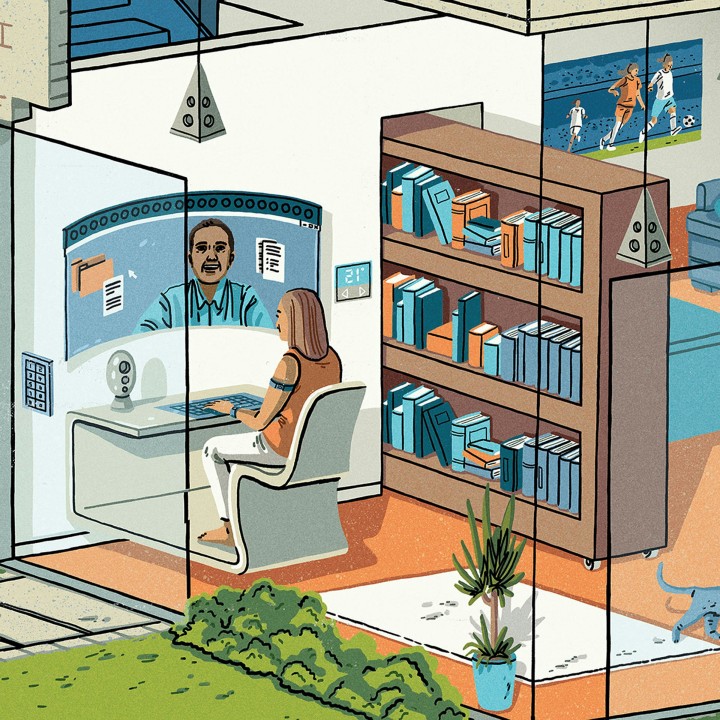Visions of the post-pandemic home

On Friday the Financial Times published an article by Helen Barrett, editor of its House & Home section, on how designers are creating new solutions for our (post-)pandemic living spaces.
In her article Barrett writes that Vitra, the German manufacturing company, published this week a “set of hypotheses” on the future of the home, as living spaces are pushed to the limits. She adds:
It is an attempt to set out the problems designers must now solve, pointing out that many of us have spent all our waking hours in the same confined space doing more than it was built to do: full-time jobs, caring for and educating children, cooking and preparing everything we eat, cleaning to high standards, and recuperating.
We learnt that, with the right technology, we could do almost anything within our own four walls – in theory.
The Vitra report proposes a focus on improving homeworking, home-schooling equipment for children and what it calls “broken-plan living”, among other points of pressure. It also predicts that in an era of unsafe public spaces, consumers will demand new and higher standards of aesthetics.
“Crises spark human ingenuity,” says Nora Fehlbaum, Vitra’s chief executive. She points to the Chaise Tout Bois by Jean Prouvé, a wooden chair designed and built for mass production in 1941 in response to a wartime shortage of metal. […]
Fehlbaum says Vitra is working on new typologies in furniture and product design, to be unveiled in October. Products that improve domestic acoustics and “retreat options” – perhaps furniture to help people hide from their families – are among its priorities.
New Dynamics in the home, Vitra’s 52 page e-paper, is available in six languages. Vitra CEO Nora Fehlbaum introduces it as follows:
We have expected a lot from our homes over the past months. In the process of retreating to them as a safe haven, they had to function as our offices and schools, playgrounds and gyms, restaurants and cinemas. We will continue to spend more time at home: remote working is here to stay, at least for the time being. Most likely, it will remain an ongoing option for most companies, and it will probably be years before travel reaches anything close to pre-pandemic levels.
At this point we must design domestic spaces that accommodate more aspects of our lives. Moreover, the extraordinary changes we have made to our routines over the last few months call for reinvention. We need to explore ways to maximise the use of limited spaces, to generate a sense of safety and make room for individual preferences. Developing the multifunctional home of the future is a challenge shared by designers, architects and manufacturers. In this issue we convey our insights on the new dynamics of the home along with the thoughts of designers and experts, including the writer Kyle Chayka, who explores how the current crisis has tested long-standing architectural assumptions, the designer Ilse Crawford, who considers the future of the home in the post-pandemic era, and architectural historian Beatriz Colomina, who addresses the expanding role of the bed. All this, along with examples of new spatial layouts and planning files.



